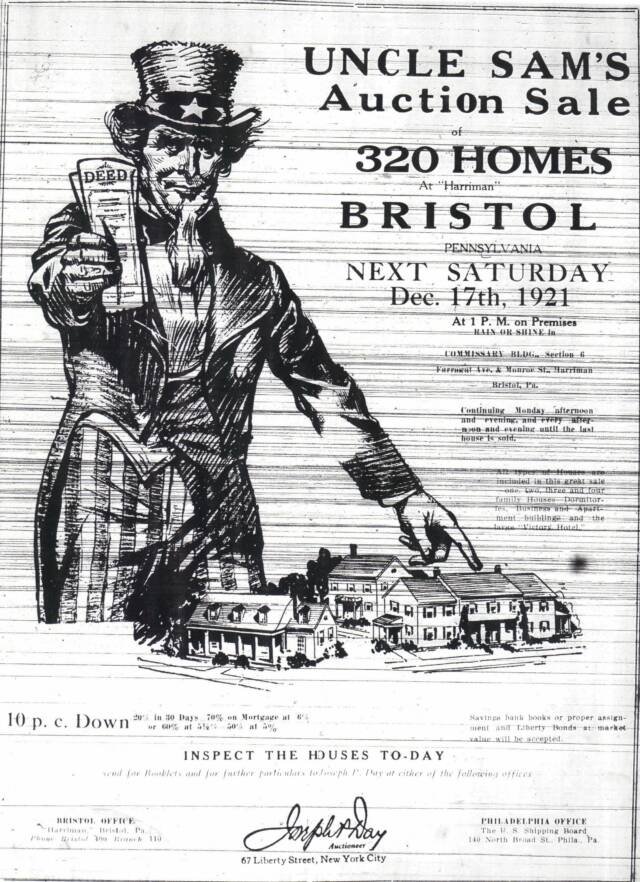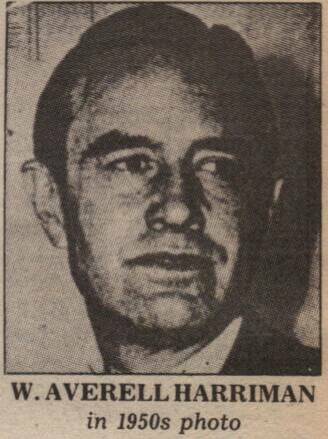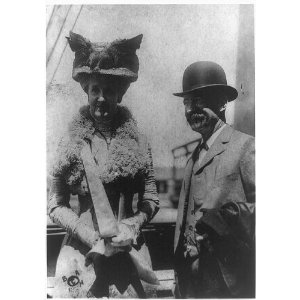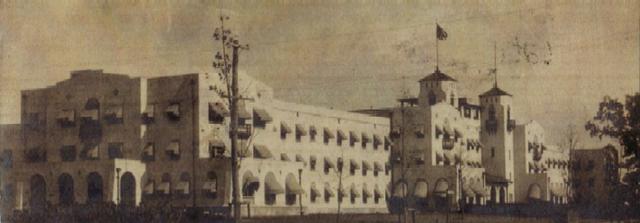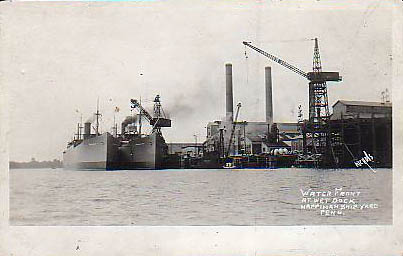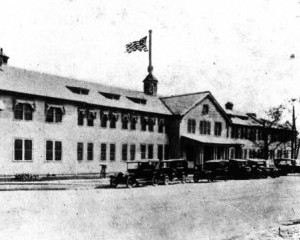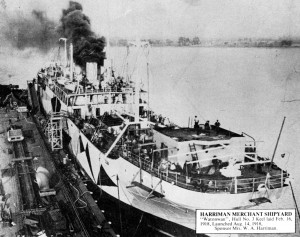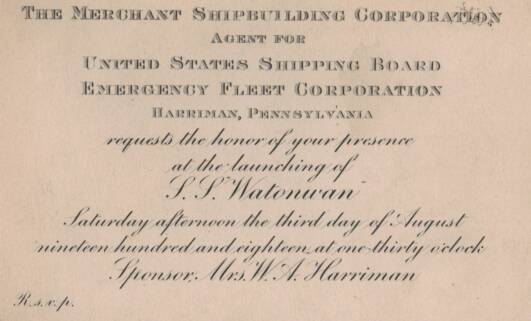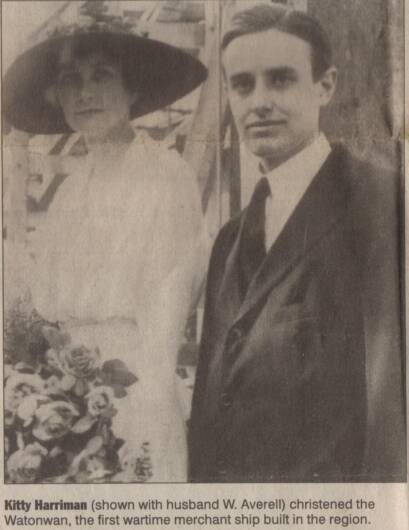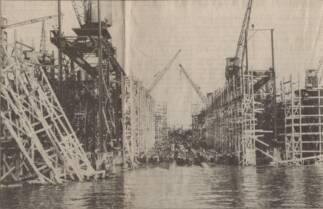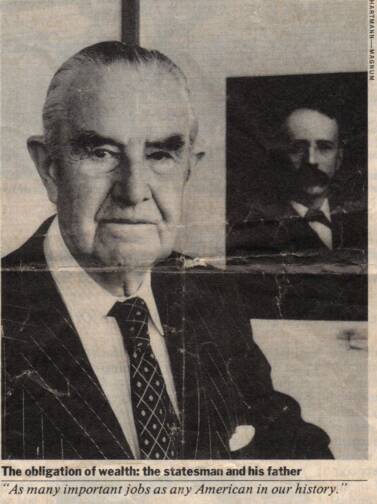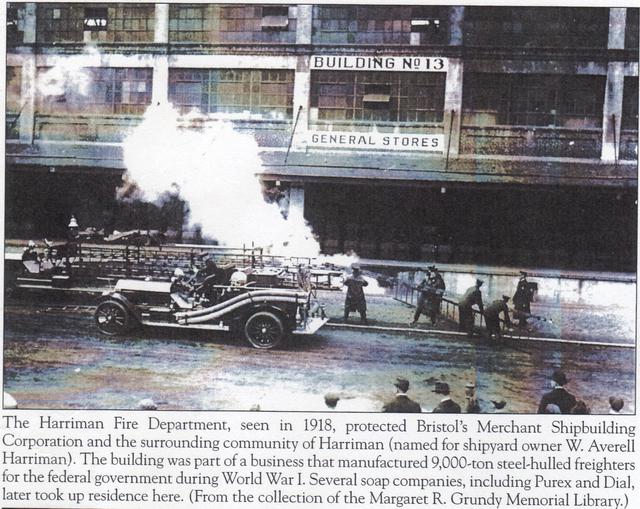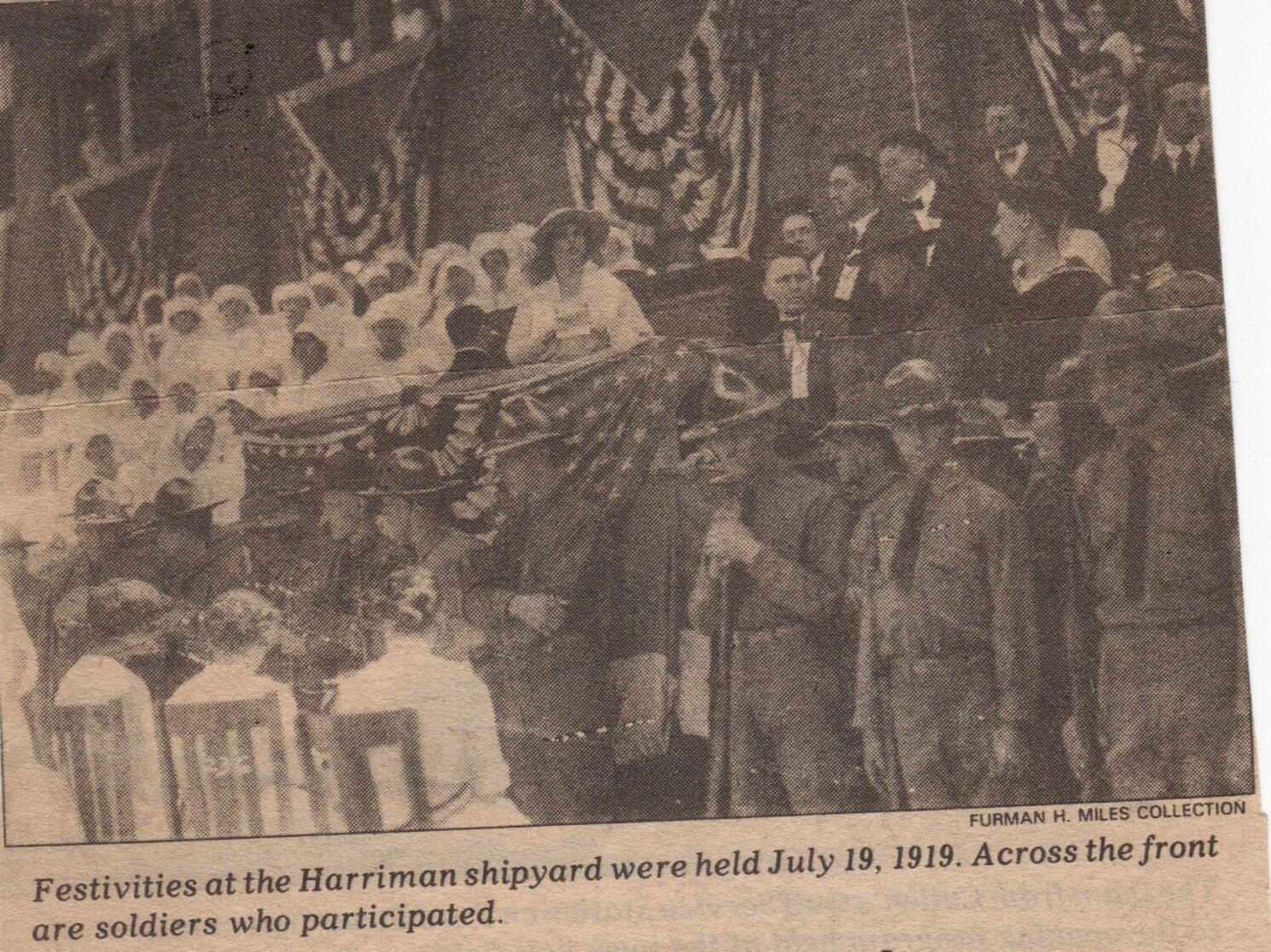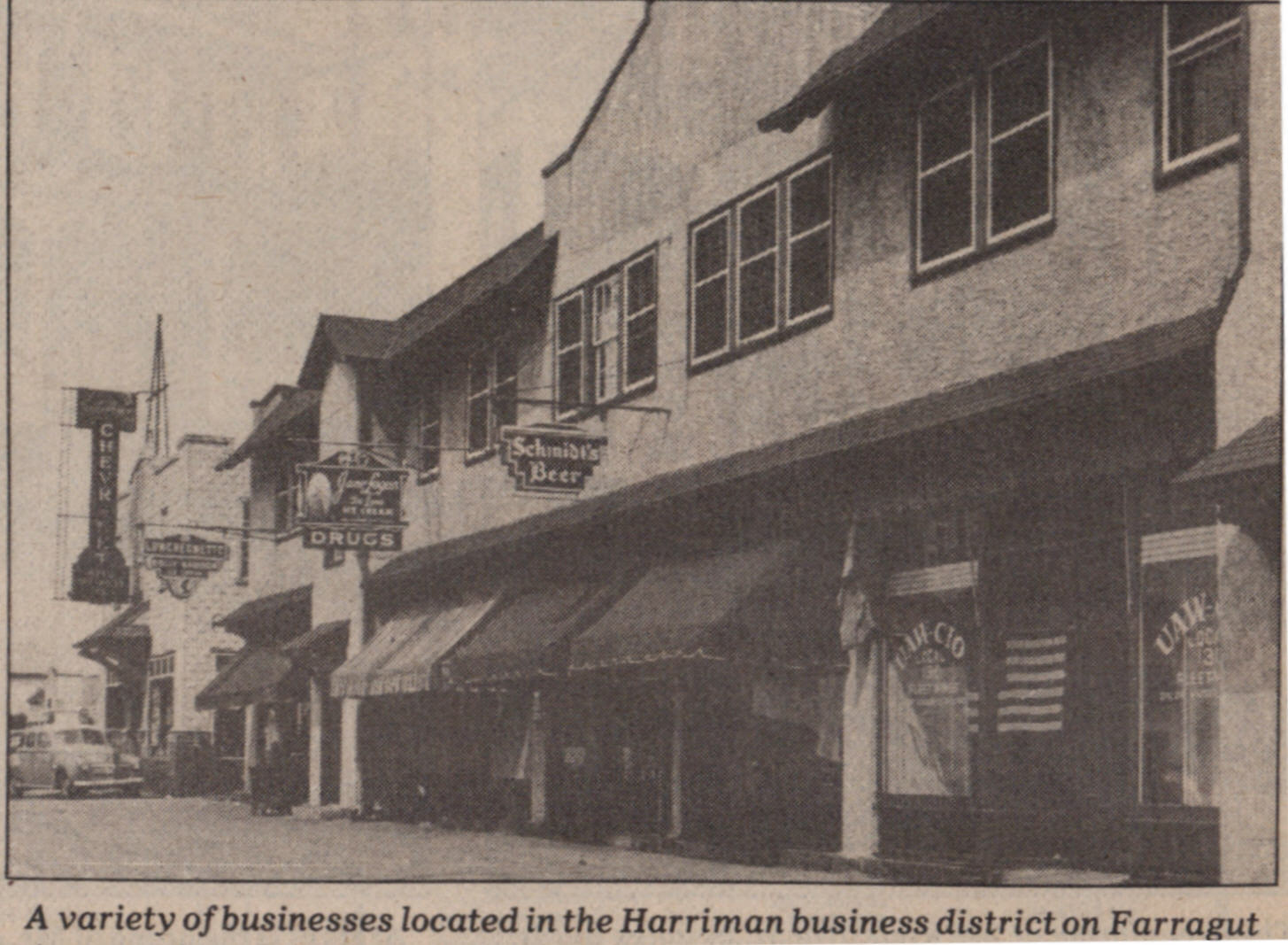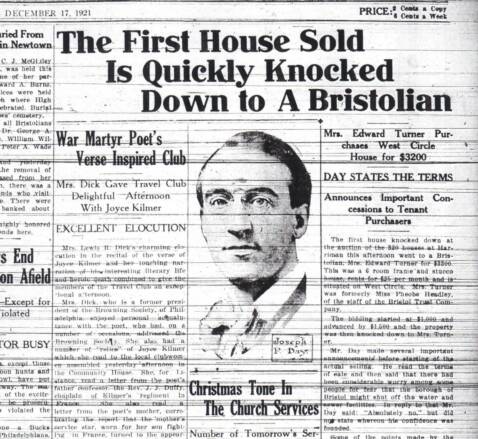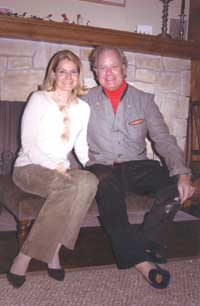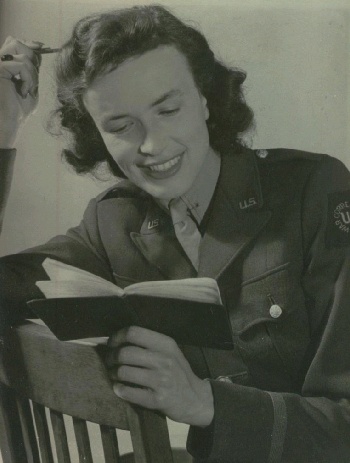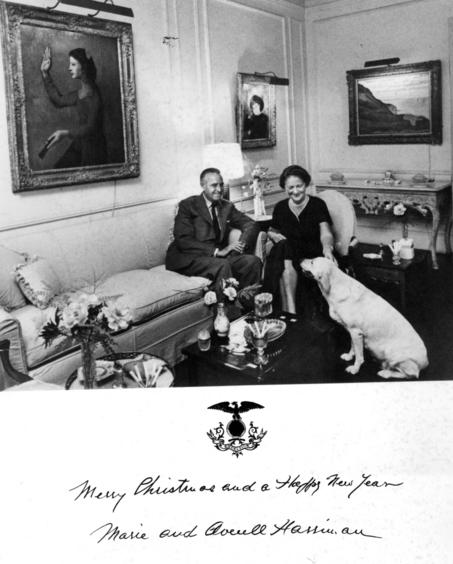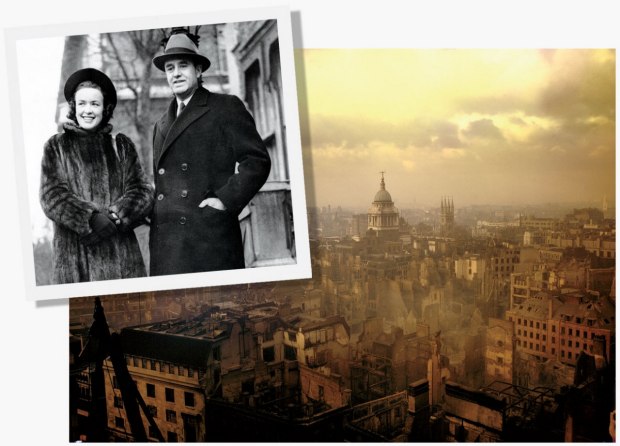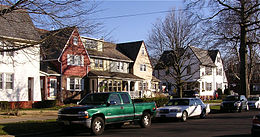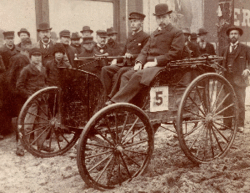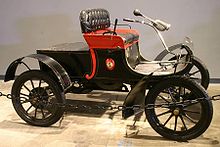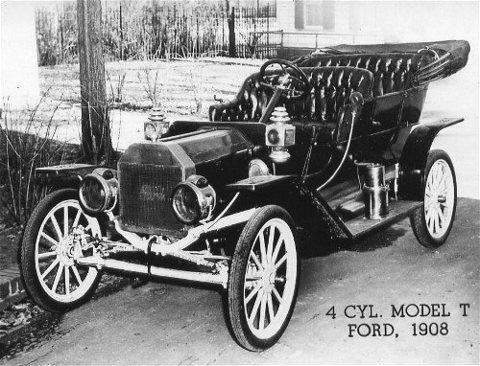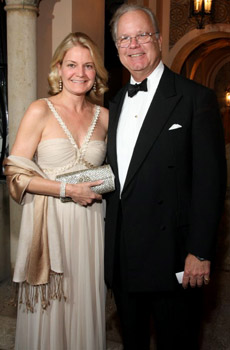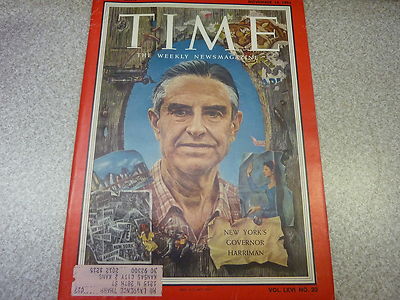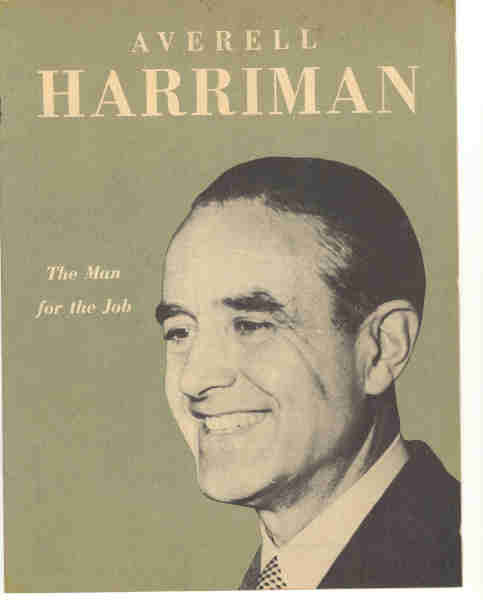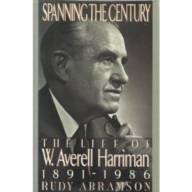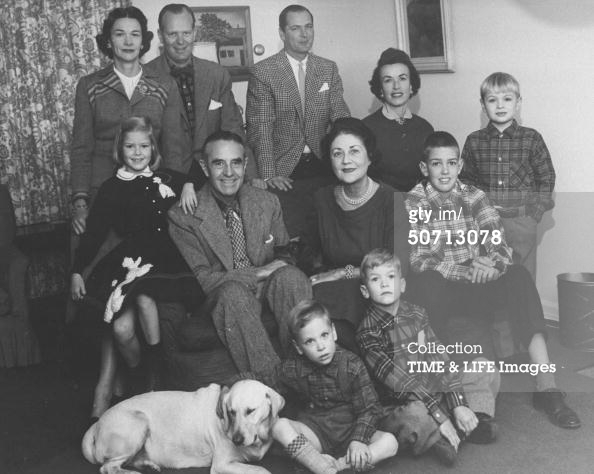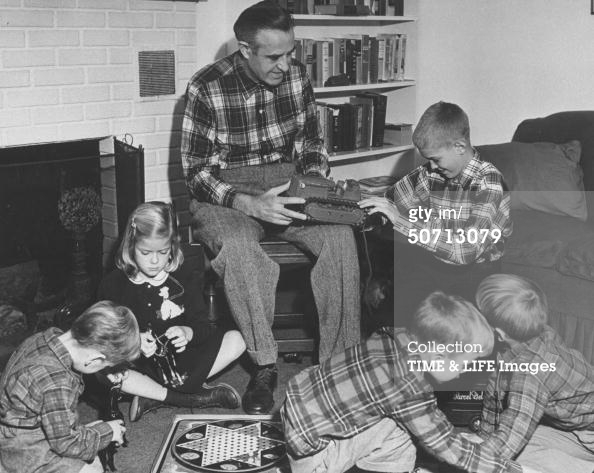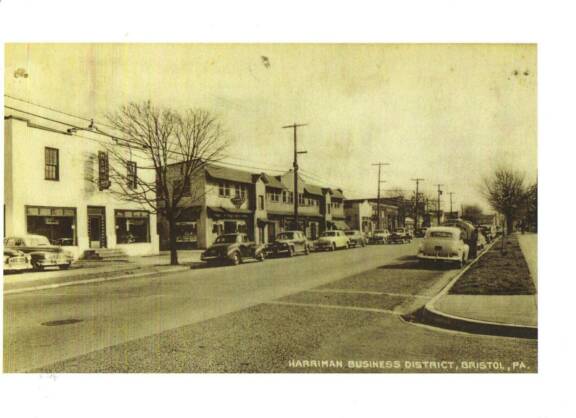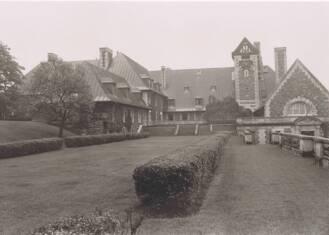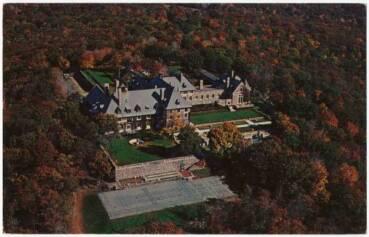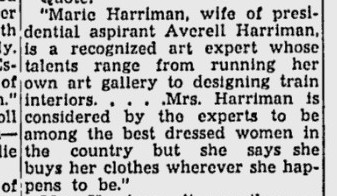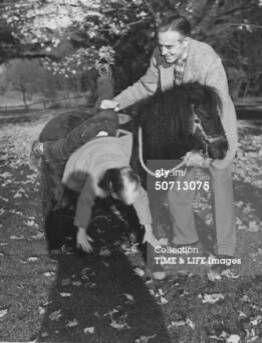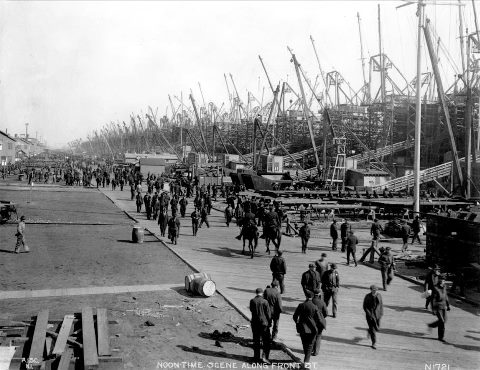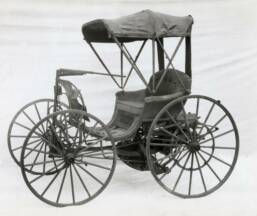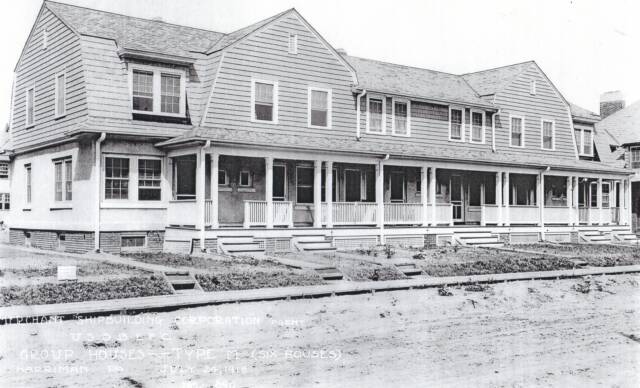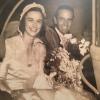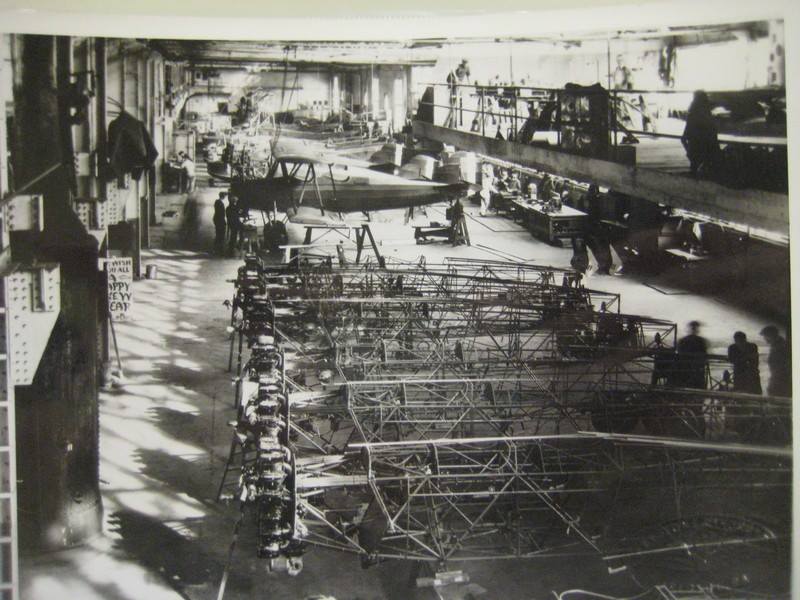Historic Bristol Day 105
by Cate Murway
Ladies and gentlemen, start your engines.
For those of you who are fans of car racing, you will probably recognize this as the famous phrase that gives the official start to the Indianapolis 500.
No racing at the 2012 Bristol Day Antique Car Exhibit on October 20th, but you really “auto” be there!
The first major automobile show, not the first show, but the one considered to be the first modern automotive show held in the United States, opened at Madison Square Garden in 1900 in NYC. That weeklong event was sponsored by the Automobile Club of America and featured 66 exhibitors displaying 31 “newfangled” autos and a variety of accessories to embellish the ride.
In 1910, auto options included a speedometer, clock, and a full glass windshield. A special ramp was built to demonstrate the hill-climbing prowess.
It cost the outrageous sum of 50 cents [about $12.75 in today's money] to attend what was known as the "horseless horse show." Despite that exorbitant price, 10,000 people attended throughout the week.
None of the automobile makes on display at the Madison Square Garden that week exists today.
In the United States, Charles Edgar Duryea, the engineer of the first-ever working American gasoline-powered car and James Frank Duryea, initially bicycle makers, founded the Duryea Motor Wagon Company in 1893, the first American automobile manufacturing company. They designed and built one of the first functioning "gasoline buggies," or gas-powered automobiles. Their "motor wagon", "Ladies Phaeton”, was a used horse drawn buggy that the brothers had purchased for $70 and into which they had installed a 4 HP, single cylinder gasoline engine.
Charles had received a jolt of inspiration from a gasoline engine he saw at a state fair. There was no reason, he thought, why such a motor could not be used to power a lightweight quadricycle, a simple frame with an ethanol-powered engine and four bicycle wheels mounted on it.
The Olds Motor Vehicle Company of Lansing, MI, founded by Ransom Eli Olds, was the first American automaker to build cars in volume, churning out 425 Oldsmobiles between 1897 and 1901.
It was Olds, and not Henry Ford, who built the first operational automotive assembly line. [Ford was the first to manufacture cars on a moving assembly line.]
Olds’ runabout, also known as the Curved Dash, was the world's first mass-produced car. Built between 1901 and 1907, it sold for $650 [that's $16,500 today].
During 1903, Rambler standardized the steering wheel and moved the driver's position to the left-hand side of the vehicle. Most cars were operated at a single speed. Chain drive was dominant over the drive shaft, and closed bodies were extremely rare. Drum brakes were introduced by Renault in 1902.
The Ford Model T was the most widely produced and available car of the era from 1908–1927.
Nearly a century ago, Henry Ford planned for his employees to be his best customers. He challenged the conventional wisdom that the best way to maximize profits was to tailor your product to the wealthiest segment of society. Ford marketed his black Model T as "America's Everyman car."
He established a simple benchmark for worker compensation: His workers should be able to buy the product they were making. Ford promised a $5-a-day minimum wage for all his workers—twice the prevailing automobile industry average.
Doing so, Ford created a virtuous circle. Workers flocked to his factory to apply for positions. If they managed to secure a coveted job, then in time they too would be able to afford one of his cars.
Most of the first car builders were inventors, rather than businessmen, early entrepreneurs working with their imaginations and the parts they had on hand.
There is no charge for the 2012 Bristol Day Antique Car Exhibit.
The location for the all American made vehicles 1982 or earlier [no foreign made vehicles] exhibit will be behind Bristol High School on Trenton Avenue between Garfield and Harrison Streets.
The Bristol Borough School District has donated use of the grounds for the car show.
Bring your event ticket and hop a ride on the 45-minute trolley excursion. The trolley will depart from the Mill Street parking lot, pass through the Harriman business district and one of the stops is for the car show and children’s activities at BHS.
An event ticket is required for the trolley, house tours and tea.
Advance sale [until 10.1.12] $10.00 adults and $5.00 children from 6 to 12.
The day of the event ticket prices are Adults $12.00 and children $6.00.
Trophy awards will be presented for “People’s Choice” and “Best of Show”.
Anyone interested in exhibiting a vehicle at the car show can call Mark Gesualdi 215.788.8621 and register in advance, insuring your spot in the exhibit.
On Historic Bristol Day, October 20th, registration will begin at 9:00 a.m.
The exhibit will run from 10:00 a.m. until 4:00 p.m. No rain date.
Mark Louis Gesualdi and his cousin, computer tech, Christopher Joseph Gesualdi are the co-chairs of the 2012 Bristol Day Antique Car Exhibit and they have spent many hours at the Margaret R. Grundy Memorial Library doing research.
Harold D. Mitchener, Joseph N. D’Emidio and Kenny Smith were a great source of information and supplied some pictures of the Borough dealerships.
Mark and Chris are members of the National Corvette Restorers Society [NCRS], a non-profit hobby group dedicated to the restoration, preservation, history and enjoyment of Corvettes. The car enthusiasts regularly do the car show circuits together.
They had hoped to locate vintage vehicles from 1917-1922 for the exhibit.
Mark shared, “I have loved cars since I was a kid.” He owns a 1974 Corvette and Chris’ pride is a 1995 model.
A neighbor, Bobby Guzzi owned the Corvettes that started his fascination at the age of seven.
The first car Mark owned was a 1963 compact Dodge Dart. He still owns his TransAm.
Chris said, “My father, Pasquale, Jr. was a car guy. When the ash tray was full, he bought a new car.”
Family member and panoramic/ automotive photographer Marc Dubus is designing the poster project boards for the displays. They will depict the original dealership buildings when they were in use, a picture of the location today, a history of the dealerships and its advertisements. An original agreement of sale from 1930 has been located.
There were a dozen car sites with twice as many dealers in historic Bristol on the Delaware. Included in the Harriman dealerships were Winter Buick and Percy Ford that started on Mill Street, William J. Strobel on Radcliffe Street, Green & Lawrence Plymouth and DeSoto on Farragut and a Studebaker dealership on Otter Street.
Weed Chevrolet is currently the location of the Moose Lodge #1169.
According to information secured from Eugene J. Williams, Executive Director of The Grundy Foundation, “Senator Joseph R. Grundy [1863 – 1961] at his death in 1961, owned a 1960 Cadillac Sedan, a 1958 Chevy Sedan, a 1954 Ford Country Sedan and a 1961 Dodge Dump Truck and records indicate repair work was done at Bristol Ford.”
The Bristol Cultural and Historic Foundation is hosting the 36th Annual Historic Bristol Day on October 20, 2012 from 10:00 AM – 5:00 PM.
Always the Third Saturday in October!
This wonderful, inexpensive outing will include the car show as well as a host of other family friendly events and activities.
For more information about Historic Bristol Day, contact the Bristol Cultural & Historical Foundation
321 Cedar Street
Bristol, PA.
215.781.9895
Historic Bristol Day 105 is the fifth segment of a series introducing the 36th Annual Historic Bristol Day to be held on October 20, 2012.
Recommend a “Spotlight”. E-mail vjmrun@yahoo.com
~~~~~~~~~~~~~~~~~~~~~~~~~~~~~~~~~~~~~~~~~~~~~~~~~~~~~~~~~~~~~~~~~~~~
Historic Bristol Day 106
by Cate Murway
W. Averell Harriman and his Merchant Shipbuilding Corporation
with the housing, the stores, a school, a 40-bed hospital,
the 500-room "Victory Hotel" and a vast "Merchant Restaurant”
put the town of Harriman in Bristol on the Delaware on the historic map!
Patriarch E.H. Harriman family’s lifelong interest in philanthropy became a profession, as they donated their personal and private resources.
Monies were contributed to The Boys' Club of New York that E.H. loved and supported, to the American Red Cross, to John Muir to help save the Yosemite Valley and to Yale University for an endowed chair of Forestry.
The E. H. Harriman Award recognizes outstanding achievements in railway safety and the award is still presented on an annual basis today.
The elder of Averell Harriman’s two daughters, Mary Averell Harriman Fisk and her husband, Dr. Shirley Carter Fisk, had two sons, the late Army veteran Robert Carter Fisk and Averell Harriman Fisk, and a daughter, Kathleen F. “Kitty” and seven grandchildren.
Averell Harriman Fisk is the youngest and he and his wife, Kirsten Schroder Fisk and their daughter, Alexandra “Alex” reside in Harriman, NY.
Railroad magnate Edward Henry Harriman and Mary Averell Harriman’s Arden house, the first and premier conference center property in the United States, is surrounded by 110,000 acres of heavily forested park and preservation lands.
It is an elegant secluded 100,000 square foot mansion set on the top of the 1,300-foot Mount Orama in Harriman, NY, located on a 50-acre plateau in a permanently protected 450-acre state parkland.
This mountaintop historic and architectural gem estate of the Hudson River Valley includes the private 125-acre Cranberry Lake.
W. Averell Harriman’s father first acquired the initial 9,300-acre Orange County parcel, just 40 miles north of Manhattan, in 1886 for $52, 500.00 for use as his weekend estate. The project started in 1904 and was constructed solely with American products and American workmen. E.H. lived in it for only a few months before his death in 1909.
Harriman commissioned a number of American artists to decorate the house. Sculptor James Earle Fraser [1876 –1953] created a bas-relief portrait of Harriman over one of the fireplaces and Malvina Hoffman [1885-1966] sculpted a bust of Mrs. Harriman.
Harriman's widow gave the house to her son W. Averell Harriman upon his wedding in 1915, although she continued to live in the west wing of the building until her death in 1932. After the U.S. entered World War II, the family offered the house to the U.S. Navy, which turned it into the first of the Navy's convalescent hospitals, modeled on those that England and Russia had already successfully created.
In 1950, Averell Harriman and his brother Roland deeded the property to Columbia University, as "home of The American Assembly," a prestigious domestic and foreign policy study group, founded by Dwight D. Eisenhower the same year. It was used primarily as a center for executive management programs and it became a National Historic Landmark in 1966 but is not open to the public.
From this estate, Harriman's widow donated 10,000 acres and one million dollars to New York State to start Harriman State Park in 1910.
The Harriman family created a lasting conservation legacy in the early 20th century by acquiring nearly 70,000 additional Hudson Valley acres—lands that OSI [Open Space Institute] and other organizations later helped permanently protect as Bear Mountain, Harriman and Sterling Forest State Parks.
Averell Harriman Fisk campaigned for his grandfather, W. Averell Harriman when he ran for his position as the 48th Governor of New York.
“I remember my grandfather was a gentleman, he always stood when a lady entered the room. He was a world class polo and croquet player.
“Averell Harriman, gentlemen, is a croquet player. His game has been described variously as cunning, sinister, malevolent and downright dirty. In other words, he is a very good croquet player.” Sports Illustrated, January 16, 1956
Politics was his life and he was always involved with the Presidents.”
Averell Fisk has “a lot of stories to tell”.
William Averell Harriman ran twice on the Democratic ticket for the U.S. presidency, yet his grandson, Averell H. Fisk is a proud Republican.
“I feel that the Democratic Party has changed; morphed into something quite ugly. It was not condescending in my grandfather’s time. He would be embarrassed now. He lived in a very dynamic time and he helped form the New Deal”, [projects for President Franklin Roosevelt]. “He regretted not having met Hitler. He wanted to meet him and size him up.”
Averell worked as a private investor on Wall Street. “I am not a politician and I have not been thrown into the political fray.”
He graduated with an MBA from Columbia Business School.
While attending Denver University, he played ice hockey as one of the only 2 Americans on the Canadian National Championship Team. “We played the Russians in the pre-Olympic games.”
His wife, Kirsten is an interior decorator and their musician daughter, Alex, plays the drums and guitar in her group, the “Lust Cats”.
Averell Harriman Fisk has agreed to schedule a future visit to historic Bristol on the Delaware and share some of his memories of W. Averell Harriman.
“I have some drawings of the shipyard that I will try to locate.”
He and his late brother, Robert restored their grandfather’s 1929 black Ford with a jump seat.
Bring your family and enjoy the annual Historic Bristol Day celebration centered on the Harriman District.
Anne Walp, proprietor of Great I.D.’s by Anne has accumulated an amazing list of different and exciting vendors for the event. A few of the vendors are listed.
City2Shore Gourmet carries a wide range of top quality balsamic vinegar and blends, infused olive and dipping oils.
Try the vanilla fig- the richest and most decadent of all their balsamic blends. Use it on a cheese platter or baked brie with chopped walnuts.
The family owned and operated Peace of Concrete products, including concrete benches, concrete statues and concrete lawn and garden ornaments are made to order, dyed, stained, and sealed. Mike L. Parker will hand paint and customize products per your request.
Daisy Blue Naturals and Marie’s Soaps are "natural" skin care products with no added petrochemicals, parabens, phosphates, or sulfates.
Giggling Goat Dairy Farmstead will present their flavored fresh goat cheese.
Rite aid is offering a free flu shot clinic and blood pressure and diabetes health screenings. Pharmacist Joon Jung will be available from 10:00 AM – 2:00 PM.
He requested, “Please bring health insurance information with yourself.”
BCHF President Gerry McCarry will be available throughout the day, after he delivers the tables and chairs and the signs announcing the 36th Annual Historic Bristol Day on October 20, 2012 from 10:00 AM – 4:00 PM.
Historic Bristol Day 106 is the final segment of the series introducing the 36th Annual Historic Bristol Day to be held on October 20, 2012.
Recommend a "Spotlight". E-mail vjmrun@yahoo.com
Historic Bristol Day 103
by Cate Murway
Although the United States was only actively involved in World War I for nineteen months, from April 1917 to November 1918, the mobilization of the economy was extraordinary and it had a lasting effect on Bristol.
The government needed to rapidly activate military resources, industry, labor, and agriculture.
When the USA entered the war, the army stood at 200,000, not nearly enough to have a decisive impact in Europe. On May 18, 1917 a draft was imposed and the numbers were increased rapidly, overall some 4,791,172 Americans would serve in World War I.
The Navy expanded to protect American shipping and the troop transports.
In June 1917, with the world at war, W. Averell Harriman came to Bristol to build ships for the American merchant fleet that was too small to meet the country's defense needs and ship supplies to troops and civilians in Europe.
The government formed the U.S. Emergency Fleet Corp. (USEFC) to stimulate private shipbuilding and Harriman viewed this as a potentially profitable venture.
Three new innovative "fabricating" shipyards were established in Newark, NJ; Bristol, PA, and Hog Island, PA. These yards received structural parts manufactured at other plants and assembled them into steel-hulled merchant ships.
Harriman purchased a 260-acre block of property along the river, and built a yard containing a dozen slipways. Construction was delayed by the extensive dredging required to provide deep enough channels in which to launch the ships.
But growth exploded in Bristol with the housing for the workers hired for the nearby shipyard run by the Merchant Shipbuilding Corporation, buildings were constructed, electrically operated boom-type cranes were installed and a 1135-foot fitting-out pier was built.
Within a few years, Averell Harriman would establish a great enterprise and build an entire company town that would survive his business and evolve into a lasting community.
The whole town was heated with steam from underground pipes from a central heating plant on Wilson & Green Lanes, supplying 212 apartments and 66 bungalows, as well as the post office, hotel, hospital and other facilities.
The residences were unique. Buildings that contained multiple units were articulated in such a way that the individual units stood out as separate components of the overall composition.
In 1918, the Inquirer newspaper reported that workers initially refused to live in the new buildings because of high rents, as much as $40.00 per month.
By 1921, production at the shipyard declined due to a postwar shipbuilding slump and the town of Harriman in historic Bristol on the Delaware was on Uncle Sam’s auction block.
Harriman had anticipated a shipbuilding boom and MSC continued to work on its wartime contracts, eventually building some 40 ships.
With no market for its services, the Merchant Shipbuilding Corporation closed in 1923.
The longest-serving MSC ship was the 55, 977 ton freighter, the Yapalaga built at the Bristol yard in 1920, scrapped in 1970 after providing 50 years of service.
Commencing Saturday December 17, 1921 at 1:00PM, Mr. Joseph P. Day would sell at auction 320 houses in Harriman, Bristol, PA. The real estate was owned by the U.S. Shipping Board of the Emergency Fleet Corporation, established in September 1916, responding to the wartime shipping shortage,
The houses were used during the war and represented in fact a wartime village.
The wartime town was splitting up.
Many Bristolians purchased the houses as speculation and investments.
By 1927 the Victory Hotel, the Merchant Restaurant, and several of the large boarding houses had been destroyed.
The Bristol shipyard was sold privately and was converted into an aircraft factory which built amphibious planes and in WWII, military planes.
Chiropractor, Dr. W. D. Martindell purchased the entire business block with its four apartments and five stores for $25,000.00.
When the Riverfront North Project was under way, derelict portions of the shipways were removed.
Harriman, the town built to accommodate the shipyard's workers, was incorporated into the Borough of Bristol. It was designed in a distinctive neo-colonial style and is listed with the National Register of Historic Places, known today as Harriman Historic District.
This planned community, this company town, is one of the few that still have the buildings and homes still standing.
There was an electric trolley that passed through on Mill Street and Radcliffe Street then, and now there is an opportunity to ride a trolley again in Bristol, invoking memories of the simpler days of yesteryear.
A classic past and a classy future will be touted in the town's docent-lead trolley tours on Historic Bristol Day, October 20, 2012. Four of the homes will be open to tour.
Be sure to purchase your ticket.
An event ticket is required for the trolley, house tours and tea.
Advance sale [until 10.1.12] $10.00 adults and $5.00 children from 6 to 12.
The day of the event ticket prices are Adults $12.00 and children $6.00.
Historic Bristol on the Delaware is a “Classic Town”, a unique place to live, work, and play, keeping its historical aspects alive.
The Bristol Cultural and Historic Foundation is promoting some of the fantastic attributes this town has to offer a potential homebuyer or business owner: walkability, transit access, an historic housing stock and a neighborly quality of life.
Come experience the ambience of yesteryear combined with the luxuries of today.
Robin Joy Simmers-Butrey, a member of the BCHF Board of Directors and the Ways and Means Committee, is a co-chair of the Trolley Team.
Robin loves the history of the town and is determined to present the HBD guests with “a real sense of our legacy and our identity and get them to know what a little gem we are."
Originally from the Pittsburgh area, she and her family now own a home in the Borough.
Robin is certified in Art education, along with a degree she earned from BCCC in historic preservation. She is a member of the Tyler Foundation Restoration Committee and volunteers at Andalusia, also known as the Nicholas Biddle Estate, the Greek Revival style mansion built by John Craig in 1794.
She has taught children’s drawing classes in an art museum and she expertly designed the Civil War display at Wachovia/Wells Fargo for Historic Bristol Day last year.
There will be 2 trolleys with a team of tour guides, including author/ historian Harold D. Mitchener; Margaret R. Grundy docent/historian Alan J. Vogenberg; Army veteran/ retired electrician Tony Russo and Navy veteran/photographer E. David McGlynn.
Harold is writing the scripts for the guides.
Bring a buddy. It’s not just a tour. It’s an incredible history lesson.
National Penn Bank on Radcliffe Street is sponsoring one of the trolleys.
An additional sponsor is needed for the second trolley. Please help.
The 45-minute excursion requires a ticket. The trolley will depart from the Mill Street parking lot, the original canal basin for the canal barges. There are embedded stones in a rectangular shape in the asphalt, marking the site of Lock One.
Penn Street to the Delaware River, then Radcliffe Street to the Lenox building where the ship yard was located, then pass through the Harriman business district.
Stop on Wilson and Garfield Streets for the car show and children’s activities at the Bristol H.S.
Continue to 922 Radcliffe Street for tea at the Walker home, where you can enjoy the view from their garden. Then hop aboard for an additional stop at the Margaret R. Grundy Library and Museum before returning to the parking area.
The last trolley will depart at 3:15 p.m.
This is an historic tour, much more than transportation. A free bus will be available to transport HBD guests from the parking lot to the Harriman business district.
The residents of this bustling riverside community incorporate its historic past seamlessly into the fabric of its always revitalizing present and they continue the longstanding tradition of “Welcoming Friends”.
BCHF member and Volunteer Committee co-chair, Ellanna [Knoth] Delaney, BHS ’56 has an urgent “all call” for help the day of the event.
Volunteers are needed for a variety of tasks, from setting up signs for the open houses to acting as ticket takers on the trolleys.
If you could volunteer to help for a couple of hours during the early morning of, during the HBD hours, or at the end (4:00 p.m.) of the event, it would be greatly appreciated!
For more information about Historic Bristol Day, contact the Bristol Cultural & Historical Foundation
321 Cedar Street
Bristol, PA
215.781.9895
Historic Bristol Day 103 is the third segment of a series introducing the 36th Annual Historic Bristol Day to be held on October 20, 2012.
Recommend a “Spotlight”. E-mail vjmrun@yahoo.com
~~~~~~~~~~~~~~~~~~~~~~~~~~~~~~~~~~~~~~~~~~~~~~~~~~~~~~~~~~~~~~~~~~~~
Historic Bristol Day 104
by Cate Murway
William Averell Harriman [1891 –1986], the US Democratic politician, businessman and diplomat, struggled to overcome his legacy as the son of the vilified robber baron who started the Union Pacific Railroad, a man President Theodore Roosevelt had blasted as a “malefactor of great wealth.” It was said of Harriman that he was forever trying to measure up to his stern and remote father, who had died when Averell was 17.
When Harriman was born during the presidency of Benjamin Harrison, the telephone was a new invention, radio was still in the future, and trolley cars were drawn by horses. The life expectancy for the American male was fifty years.
“Do not go where the path may lead, go instead where there is no path and leave a trail.” Ralph Waldo Emerson
From the book Spanning the Century, The Life of W. Averell Harriman by Rudy Abramson, in just a little more than 4 months, the new ship town in Bristol was nearly finished and keels had been laid for the first two freighters.
The unrelenting din that continued for 18 hours a day left some of the workers with impaired hearing, or blinded or scarred by shards of hot steel or flying rivets.
The daily bustle included 27 trains pulling in to unload shipyard workers who were often loud and rambunctious.
Four of Harriman’s men drowned when scaffolding gave way during a ship launching and dozens of workers fell into the river a few feet from the shore.
The entire borough of Bristol was not altogether happy about the boomtown prosperity.
Charlotte Landreth Melville’s grandfather, the Civil War Union Army Officer Capt. Burnet Landreth [1842-1928] was a third generation wealthy seed merchant who had been the most prominent businessman before Harriman’s arrival. In 1878, Capt. Landreth had declined President Hayes’ offer of Commissioner of Agriculture.
He carped about the “fabulous profiteering by Harriman and his gang” and felt that “this crowd was composed of the worst element in the country.”
Inspectors had found some of the men sleeping on the job and according to Charlotte’s grandfather’s letter dated March 1922, “many were idle all day”.
A lot of these workers, who had “never even owned a horse, found themselves in receipt of extremely high wages, $8.00-$9.00 a day; often $100.00 a week.”
They purchased automobiles and whatever momentarily pleased their fancy. Some used a taxi service between Harriman and the Pennsylvania Railroad Station.
“Some enthusiastic writer, who knows very little about the subject will attempt to describe the Bristol Shipbuilding scheme—that of the Merchant Shipbuilding Corporation, agents for the United States Emergency Fleet Corporation—as a great success, but as a person on the spot I want to make a record this March, 1922, of it as a failure—worse than that, a bubble which grew up like a mushroom during war times—a fraud on the people—a profit to the grafters.”
Harriman meanwhile blamed most of the problems on government foot-dragging and the Shipping Board engineers’ demands for “picayunish” changes that threw the assembly work behind schedule.
The historic flu pandemic struck in 1918, and in shipbuilding communities all along the river, hospitals and clinics were so overtaxed that the stricken residents were taken by boat to an emergency care station set up in the immigrant quarantine station at Sandy Hook, NJ. An estimated 10% to 20% of those who were infected died.
Harrimans’s shipbuilders lived in stucco bunkhouses and family dwellings while the immigrant workers at Hog Island, “Hoggies”, lived in shacks and fed their hogs on Philadelphia garbage.
According to the Bristol Daily Courier headline in March 1919, “2000 workers seek employment near homes when corporation quit paying their transportation”.
The Chairman of the Board of the Merchant Shipbuilding Corp. had his own plethora of personal troubles as well.
Averell Harriman may have been a gentleman and a statesman, but apparently he was not much of a father, according to the newspaper, “The Blade” of Toledo, OH in October 1994. They labeled him aloof and absent during his 14 year marriage while his children grew up between the two world wars. Some of his friends assumed he was single.
For his daughter, Kathy, “Ave,” as she called him, had always been a bachelor father. Kathy’s mother had filed for a divorce when Kathy was 12, and died seven years later. Kathy and her older sister, Mary, had been raised by a beloved governess, Elsie Marshall.
Just two months after the birth of his first child, Mary Averell Harriman, in January 1917, his wife, Kathleen Lanier [Lawrence] “Kitty” became pregnant again. The once willowy, attractive, accomplished horsewoman was still struggling to recover from a riding accident, and she was seriously weakened after the birth of Kathleen Lanier Harriman on December 7th. In September 1918, his wife was diagnosed with tuberculosis. They were divorced in 1929. Kitty married Dr. Eugene Pool a noted surgeon and she died in 1936.
In 1930, Averell married socialite Marie Norton Whitney, who died in 1970.
On September 27, 1971, the now 80-year-old Harriman married the English born socialite, Pamela Beryl [Digby] Churchill Hayward [1920-1997], the ex-wife of the hard drinking journalist, Randolph Churchill, the son of British Prime Minister Winston Churchill; and the widow of the Broadway producer, notably of the very successful “Gypsy" and “The Sound of Music”, Leland Hayward.
Pamela's only child, Winston Churchill, was named after his famous grandfather.
Their marriage lasted until Harriman’s death at the age of 94 in Yorktown Heights, NY in 1986.
Harriman, the son of the founder of the Union Pacific Railroad and a former ambassador to the Soviet Union, died July 26 at age 94.
He left a personal fortune of $140 million and a rich political legacy.
Harriman’s story mirrors a life breadth and variety dedicated initially to private pursuits and then refocused on public service.
Following the war he established W. A. Harriman & Company, a financial house which became the Wall Street firm of Brown Brothers Harriman & Company. In the mid-1920s, he invested in extracting manganese from mines in the Soviet Republic of Georgia, and during the early 1930s, he took charge of the Union Pacific Railroad and was credited with reviving the line during the bleakest years of the Depression.
The long-jawed NY aristocrat, whose political career spanned half a century, was among the most durable and influential diplomats of the 20th century.
In 1994, trustees for the daughters, grandchildren and great-grandchildren of the former Governor of New York, founder of Sun Valley Resort and heir to one of America's most legendary fortunes, sued his widow, Pamela Harriman, the United States Ambassador to France, claiming she had squandered more than $30 million from their trust funds on high-risk investments that included an ill-fated New Jersey resort.
His journalist daughter, Kathleen Lanier Harriman Mortimer, was married to an advertising executive Stanley Grafton Mortimer, heir to the Standard Oil fortune. She was called Kathy by her friends and Puff by her father. She died 2.17.11 at the age of 93. Her husband predeceased her in 1999, and she was survived by their three sons.
She could out-ski her railroad heir and financier father, as she had trained with the women’s Olympic ski team. She could also out-shoot him. Harriman, the American tycoon and diplomat, had adored her.
His elder daughter, Mary Averell Harriman Fisk died in 1996 at the age of 78.
Mary worked without fanfare through the NYC Volunteer Program, of which she was a founder, and the Public Education Association.
For her volunteer efforts, the Y.W.C.A. of New York City cited her as Woman of the Year in 1983 and gave her its Elizabeth Cutter Morrow Award, for women who have influenced the quality of life in New York.
Kathy and she had taken leadership positions in a variety of educational, policy, and other institutions. In recognition of life-long volunteer work, the Mary and Kathleen Harriman Foundation was named after them.
Mary and her husband, Dr. Shirley Carter Fisk, who died in 1979, had two sons, Robert C. [1941-2010], and Averell Harriman, a daughter, Kathleen F. Ames, married to Charles C. Ames and seven grandchildren.
Averell Harriman served as special envoy to President Franklin D. Roosevelt during World War II, and his special representative to administer the Lend-Lease aid to Britain during the low point of the Allied war effort, later serving as ambassador to Russia and the United Kingdom. He also ran twice on the Democratic ticket for the U.S. presidency. Yet his grandson, Averell H. Fisk is a proud Republican.
The Harrimans were a fascinating force, exercising influence on every facet of life that matters to powerful America, business, politics and society.
His life among the American plutocracy reads like an F. Scott Fitzgerald novel.
When the war ended and the shipyard closed, Harriman itself quickly metamorphosed into a ghost town.
Retired barber/Navy veteran Vincent Joseph Nocito shared that his father began his barbering career “Dominick Nocito’s Barber Shop” in the lobby of the Victory Hotel that was located on Farragut Avenue. According to Vince, the original business card stated, “We need your head to run our business”.
Legend has it that the town layout was designed “like a long ship”. The streets representing bulkheads were named after USA Presidents from James Madison, the 4th President, to the 26th President, Theodore "Teddy" Roosevelt. The bow and stern were labeled East and West Circle.
The years after World War One were an important turning point in the making of the American nation. The country turned away from the problems of Europe and now it would deal with problems of its own.
What does remain of Harriman in historic Bristol on the Delaware is the row after row of neat trim brick twin homes that sit on neatly sculpted lawns, a unique part of Bristol Borough that has survived and prospered.
Historic Bristol Day 104 is the fourth segment of a series introducing the 36th Annual Historic Bristol Day to be held on October 20, 2012.
Recommend a “Spotlight”. E-mail vjmrun@yahoo.com
~~~~~~~~~~~~~~~~~~~~~~~~~~~~~~~~~~~~~~~~~~~~~~~~~~~~~~~~~~~~~~~~~~~
Historic Bristol Day 102
by Cate Murway
As darkness descended on the last day of January 1917, German ambassador Johann von Bernstorff called on Secretary of State Robert Lansing [1864-1928], who served in the position of Legal Advisor to the State Department at the outbreak of World War I, to deliver the chilling message that made war inevitable for America.
The USA had been moving unalterably toward war with Germany ever since a German U-boat had torpedoed the British ocean liner RMS Lusitania, enraging Americans, off the coast of Southern Ireland at Old Head of Kinsale in May 1915.
On board were 1,959 people, 159 of whom were Americans.
128 U.S. civilians were killed in a war in which they were officially neutral.
World War I impacted the American economy long before the USA entered the conflict in April 1917. Shortly after the outbreak of hostilities in 1914 American foreign trade began to experience a shortage of merchant ships.
A visionary, William Averell Harriman the steamship king, was not, but he had powerful faith that new technology always brought with it investment opportunity.
Harriman was then twenty-five years old and the father of a month old daughter, Mary, named in honor of his mother, Mary Williamson [Averell] Harriman. He was fulfilling the family obligations as the eldest son, performing more than a modicum of public service and learning the business of his father, railroad magnate Edward Henry “E. H.” Harriman.
To make a mark of his own, he had to establish a place outside of the railroad industry.
Averell was slow to understand the implications of the war for America and himself, and although his mindset was in neutrality, he felt he could provide a service much more important than hoisting a rifle or serving as a junior officer.
“Shipping would prove the neck of the bottle” to supply the Allies with convoys of food, fuel, guns, and ammunition.
The world’s largest shipyard then was in Philadelphia at the site of the future Philadelphia International Airport. Because of the war and the need for cargo ships, dozens of shipyards were set up along the Delaware River.
His Merchants’ Shipbuilding Company began work at a 270-acre site in Bristol, twenty-five miles up the Delaware from Philadelphia and architect Carroll H. Pratt, known as a town planner, was appointed designer of the buildings.
Harriman is historically significant to Bristol because it’s closely associated with the mobilization of American industry during World War I, which affected the country’s economy before the U.S. involvement in the conflict.
It was a town built to help win the war.
The operation required construction of shops and facilities in order to build at least a dozen freighters at a time and a town for the twelve thousand workers required.
There were six rows of earlier company housing built in 1907 for the employees of the defunct Standard Cast Iron Pipe & Foundry Company, from which Harriman had purchased the property. These uniformly designed houses represented a sharp contrast to the row upon row of individually tailored stucco homes constructed by the Emergency Fleet Corporation.
Averell Harriman brought in an old steamer, the Cape May, and docked it at the shore, to provide living quarters for the first construction gangs.
The carpenters, steelworkers and laborers were swarming over the site from dawn until dusk as well-paved and sewered streets began stretching forth.
Farragut Avenue became the village’s business district and it was there that Harriman’s hospital was built.
The entire community included the most modern infrastructure of the time, such as sanitary plumbing, electric, hot air furnaces or steam heat.
Harriman, “the young man from Yale”, purchased a comfortable home from the wealthy seed merchant, Burnet Landreth, overlooking the Delaware and he shuttled back and forth in his motor launch, the Wah Wah, between Harriman, PA, the new shipyard community and his property in Chester.
The government had agreed to pay him $64,000 per ship with bonuses up to $15,000 for early delivery. A long-range vision was for the USA to emerge from the war as a new maritime power that would rival Great Britain and Germany.
John Roche, Ed.D. will portray W. Averell Harriman on Bristol Historic Day.
When production at the shipyard declined due to a postwar shipbuilding slump, the government consequently closed the shipyard and put many of the residential houses up for auction on December 7,1921.
On May 17,1922, Harriman with its 17 acres was annexed into historic Bristol on the Delaware and is known as the East Ward.
Dr. George T. Fox purchased, renovated and redecorated the Harriman Hospital to a 40-bed capacity and opened it to the public that July. With a five-story addition, it later became the Delaware Valley Hospital.
World War II changed the pace of quiet Bristol. The old shipyards were put to use as Fleetwings where aircraft was built. Seasoned residents can recall the “painted windows”, the “swing shifts” and watching with pride as a popular red, white and blue pennant was hoisted on the flagpole announcing that the production quota had been met.
Listen for the stories. The assured tone of the voice and the welcoming expression on the face are those of pride. Stories about the river being frozen so solid that horses and sleighs, and even automobiles could cross, are true. So are stories about the shad being so plentiful in the river, they could be raked ashore, the underground railroad, fancy balls in the luxurious hotels and Joseph Bonaparte’s visits that have all enhanced the proud history of Bristol.
Bristol is an outstanding member of the Landmark Towns of Bucks County.
Pennsylvania’s assortment of charming historic towns captures the spirit of the making of America, the importance of freedom and the drive for innovation.
Bristol is underrated. There is lots of history in over 300 years.
Historic Bristol Day is always the third Saturday in October when the trees begin to take on a multi-golden hue and front steps are home to color-rich chrysanthemums.
The Bristol Cultural and Historic Foundation is hosting the 36th Annual Historic Bristol Day on October 20, 2012 from 10:00 AM – 4:00 PM in Harriman.
BCHF is a non-profit organization dedicated to preserving over 330 years of Bristol's history and increasing cultural opportunities for all residents of the community.
Originally called the Radcliffe Cultural and Historical Foundation, unique in promoting history and culture, it can be traced back to May 1967. The founding members, Joseph E. Pavone, Rohm & Haas chemist, Robert Cox, the late U.S. Army Air Corps Veteran of World War II Seymour S. Kaplan, merchant Charles Richmond, Dr. Julius Sobel and school Principal Kenneth Pearce incorporated this non-profit educational organization.
The late artist, Joe Pavone was their first president and they met weekly at his Radcliffe Art Gallery on Franklin Street.
The late William Paul Ferguson organized walking tours of the town.
The Director of the Margaret R. Grundy Memorial Library, Mary Jane Mannherz, and Pauline White, dubbed by Pavone as “the dynamic duo”, launched the first Historic Bristol Day.
This event revives the Colonial tradition and the celebratory atmosphere of market days, a time when crowds converged not only to buy and sell their goods, but also to meet and greet neighbors.
Bristol, a wharf town nestled on a bend of the Delaware River, saw much of the goods necessary for daily living during the early days, transported into the area.
Since 1978, the venue has included historic homes, walking tours, displays, children’s corner, crafts and entertainment and now a River Regatta, Harriman Trolley Tour and a Car Show will be added to the social and promotional venue.
The craft and vendor area will be located on the 200 and 300 block of Radcliffe Street.
An Event Ticket is required for the trolley, house tours and tea.
A framed Joseph Sagolla original watercolor of the Harriman business district will be raffled.
Joe Sagolla is an accomplished artist at work. The town is rich with his artistic expressions, from the historic monuments that he restored to the colored concrete tiles along the Delaware that he built from scratch, to the large painted mural depicting the historic waterfront that adorns the National Penn Bank on Radcliffe Street.
Tickets, $1.00 each or six for $5.00, are available the day of the event and at other Bristol Events.
Tickets may also be purchased by calling Helen Younglove at 215.788.9408.
For those hungry for more than just history, the BCHF Bakery co-chairs, sisters, Mary Alice “Mary” and Joanne Marie “Jodi” Kehoe are recruiting Borough residents and local Levittown friends to bake fresh delicious homemade goods for the event.
Who needs that packaged stuff anyway?
The bake sale has always been an important fundraiser to provide scholarships to local students and help to sponsor the Writer's Voice Program.
Historic Bristol on the Delaware is rich in heritage with faith in the future.
Bring your kin and enjoy this annual, historic community celebration.
Whether you visit during a parade or a festival when the streets are brimming with activity, or take in the simpler life while sitting on a bench near the postcard-perfect Victorian gazebo in the waterfront Bristol Lion’s park, you will always be welcome.
Volunteers needed. If you could volunteer to help for a couple of hours during the early morning of, during the HBD hours, or at the end (4:00 p.m.) of the event, it would be greatly appreciated!
For more information about Historic Bristol Day, contact the Bristol Cultural & Historical Foundation
321 Cedar Street
Bristol, PA. 215.781.9895.
Historic Bristol Day 102 is the second segment of a series introducing the 36th Annual Historic Bristol Day to be held on October 20, 2012.
Recommend a “Spotlight”. E-mail vjmrun@yahoo.com
~~~~~~~~~~~~~~~~~~~~~~~~~~~~~~~~~~~~~~~~~~~~~~~~~~~~~~~~~~~~~~~~
Historic Bristol Day 101
by Cate Murway
Bristol’s first switchboard was installed in 1883. So, can you hear us now?
Every now and again, you are fortunate enough to stumble upon a town that's gotten everything right— cafés that serve great coffee, restaurants that prepare terrific food and a plethora of character to share. It’s the kind of place where people are invested in making sure history is paid real respect.
Knowing historic Bristol on the Delaware's impressive times gone by and appreciating the benefits of its small town lifestyle are common sources of pride for the community.
Bristol has proven fertile ground for business and family where preservation and industriousness is key.
Bristol is a small borough with a big history. Its prime location helped make it a busy port and industrial town in the 1800’s. Coal yards and warehouses sprang up along the canal, as well as large mills that manufactured carpets, woolens and other textiles. Later, shipyards thrived and the neighborhoods showed signs of modest worker housing, along with elegant Victorian homes. It is emblematic of a period when the Delaware River contained the largest concentration of shipyards in the United States.
Small towns have become a national icon, a national tradition.
The Bristol Cultural and Historic Foundation is hosting the 36th Annual Historic Bristol Day on October 20, 2012 from 10:00 AM – 4:00 PM.
Always the Third Saturday in October!
Thanks to the Director of the Margaret R. Grundy Memorial Library, Mary Jane Mannherz’s enthusiastic diligence and suggestion, this year the main theme is to celebrate the 90th anniversary of the annexation of the historic Harriman District to Bristol Borough.
There will be guided trolley tours every half hour from the Wharf area, along with a myriad of children's activities. The traditional entertainment and vendors [you won't go hungry] will be in the Radcliffe Street area of town. The new venue includes the antique car show behind Bristol High School and a sailing regatta held on the beautiful Delaware River starting at the Wharf at approximately 1 PM and sailing toward the Bristol Burlington Bridge and back.
An event ticket is required for the trolley, house tours and tea.
Advance sale [until 10.1.12] $10.00 adults and $5.00 children from 6 to 12.
The day of the event ticket prices are Adults $12.00 and children $6.00.
Retired school teachers, Jeanette Ann “Jan” Ruano and Kathleen “Kathy” Barniskis are the event co-chairs.
Jan has resided in the area since the1960’s. She likes Bristol and appreciates the ethnic diversity and the celebrations and is sincerely interested in the historical background of the Borough.
Kathy expressed, “Bristol is a very good community.”
Both of them were impressed and surprised to learn of Averell Harriman successes at such a very young age of 24 years old.
“So much was accomplished in just 4 years- a hospital, the police station, a post office, public water, sewerage, and the fire company.”
Kathy is notifying all East of the Susquehanna historical organizations about this phenomenal event. Setting up behind the scenes, will be her husband, Andrew Barniskis and their sons, Michael and Steven, providing the “man power” for the tables and saleables on Radcliffe Street.
The 17-acre Harriman Historic District is located in the northern section of Bristol.
Growth exploded when the U.S. entered World War I in 1917 and the Emergency Fleet Corporation (EFC) hired a Massachusetts-based company to build housing for workers hired at the nearby shipyard run by the Merchant Shipbuilding Corporation (MSC). The Bristol project was to become the largest single housing project ever undertaken by the EFC.
Four private homes representing styles of the homes built for the workers in 1917 will be open for viewing on Historic Bristol Day.
William Averell Harriman [1891 –1986], a key figure in the development of Bristol, was the son of railroad magnate Edward Henry “E. H.” Harriman and Mary Williamson Averell.
He graduated from Yale in 1913 and became Yale's youngest Crew coach.
After graduating, he inherited the largest fortune in America from his father. The estate was substantial, variously estimated between $70 million and $100 million and he established the W.A. Harriman & Co. banking business in 1922.
His father taught him that "great wealth is an obligation", and he always followed his father's admonition to "be something and somebody."
He lived on North Radcliffe Street in a house purchased from the Landreth family.
His sister, Mary Harriman, the eldest, was a close friend of [Gracie] Hall Roosevelt [1891- 1941], the youngest brother of former First Lady of the United States, Eleanor Roosevelt [FDR’s wife] and the nephew of Theodore Roosevelt.
His brother, Army Lt. Edward Roland Noel “Bunny” Harriman, a financier and philanthropist, was the youngest of the six children. He and his wife established the Irving Sherwood Wright professorship in geriatrics at New York Hospital-Cornell Medical Center and provided funds for cardiovascular research at the hospital.
Averell Harriman was the 48th Governor of New York [1955 – 1958] and served as national security adviser during the Korean War and the Assistant Secretary of State for Far Eastern Affairs [1961 –1963].
He was an original investor in a forerunner of Pan American Airways, and in publishing with a national independent journal of public affairs magazine called Today, whose first subscriber was FDR. Today eventually merged with News Week.
On September 7, 1917, five months after the USA declared war on Germany in WWI, Harriman’s Merchant Shipbuilding Corporation signed a contract with the United States Shipping Board Emergency Fleet Corporation to build 40 cargo carriers.
The construction of the shipbuilding company seemingly occurred overnight with twelve shipways constructed along the Delaware at the site along Radcliffe Street that had been occupied by the Standard Cast Iron Pipe and Foundry Company.
Just under a year after the shipbuilding began, the first ship, the Watonwan, was launched.
The Harriman district is slightly oval in shape, bounded by East and West Circle on the north and south, Farragut Avenue on the east and Trenton Avenue to the west.
The streets, many of which are named after American Presidents, are wide and tree-lined.
In addition to the housing itself, 18 stores, a school, a 40-bed hospital, a 500-room $660, 000 hotel
and a vast "Merchant Restaurant" capable of serving 12,000 meals a day were constructed.
Construction began in March 1918. In designing the project, the original architects strove to provide not mere accommodation, not just barracks behind thin walls, but to add individuality to the family buildings. Most of which are finished in Tudor Revival or Colonial Revival styles, with brick first floors, stucco or wood-ornamented second floors, large porches and steeply pitched gable roofs. The carefully planned community, with generous building lots and enclosure of a standard grid pattern within an oval, attests to the EFC's efforts to build model communities, not merely quarters for the workers.
The only major surviving non-residential structure, Bristol High School, was built as Harriman Public School.
In 1987 the district was added to the National Register of Historic Places as a well-preserved example of a government planned and financed residential neighborhood from the World War I era.
To this day, one can easily see the results of this social experiment. Many houses appear as they did when they were built. The tour will point out all the various aspects of this social phenomenon.
Historic Bristol can feel so much like home for the weekend events…. come make it official!
We’ll keep the lights on for you.
Historic Bristol Day 101 is the first segment of a series introducing the 36th Annual Historic Bristol Day to be held on October 20, 2012.
Recommend a “Spotlight”. E-mail vjmrun@yahoo.com
~~~~~~~~~~~~~~~~~~~~~~~~~~~~~~~~~~~~~~~~~~~~~~~~~~~~~~~~~
Built in the Spanish mission style, the Victory Hotel stood on Farragut Avenue between Hays and Harrison Streets.
It was later dismantled and moved to South NJ, where it was the framework for two different buildings.
Built in 1918, later used by Keystone Aircraft and Fleetwings.
Harriman's grandson,
Averell Harriman Fisk and his wife, Kirsten
February 1943
1952
running for governor brochure
Gov. Averell Harriman & wife Marie in family portrait
(top L-R): Mary & husband Dr. Shirley Fisk; Stanley, wife Kathleen & David Mortimer; (C, L-R): Kitty Mortimer; Gov. & Mrs. Harriman; Bobby Fisk; (bottom, L-R): white labrador Brum; Jay Mortimer andAverell Fisk .
(Photo by Weintraub/Pix Inc./Time Life Pictures/Getty Images)
NY Gov. Averell Harriman sitting & playing w. his grandchildren (clockwise): Bobby Fisk, David Mortimer, Averell Fisk, Jay & Kitty Mortimer.
At Arden Farms.
(Photo by Weintraub/Pix Inc./Time Life Pictures/Getty Images)
Gov.-elect Averell Harriman catching his 6-yr-old grandson Averell Harriman Fisk by seat of his pants as he falls off pony, on family farm.
(Photo by Weintraub/Pix Inc./Time Life Pictures/Getty Images)
from Facebook: https://www.facebook.com/home.php#!/oldimagesofphiladelphia
Old Images of Philadelphia
During World War I, industrial laborers working on government contracts made good wages and enjoyed unprecedented federal protections. No operation better demonstrated America's industrial might than Philadelphia's Hog Island Shipyard. Thrown up almost overnight on salt marches along the Delaware River below South Philadelphia, Hog Island in 1918 was the world's largest shipyard. There, the American International Shipbuilding's 50 slipways launched 180 steel steamers between August and November, 1918. When the war ended, the shipyard laid off most of its workers, leaving thousands unemployed.
Duryea brothers first tested automobiles
on the streets of
Springfield, MA,
on September 20 1893
Merchant Shipbuilding Corporation
US.SB.EFC
Group Houses - Type M [6 houses] Harriman, PA
7.24.1918
Harriman Village
view looking East
photographer R.G.M.
9.05.1918
5.19.1922
Mr. and Mrs. W. Averell Harriman
click on thumbnail to enlarge
